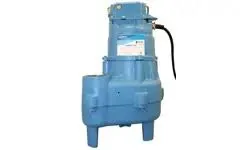English
- Afrikaans
- Albanian
- Amharic
- Arabic
- Armenian
- Azerbaijani
- Basque
- Belarusian
- Bengali
- Bosnian
- Bulgarian
- Catalan
- Cebuano
- Corsican
- Croatian
- Czech
- Danish
- Dutch
- English
- Esperanto
- Estonian
- Finnish
- French
- Frisian
- Galician
- Georgian
- German
- Greek
- Gujarati
- Haitian Creole
- hausa
- hawaiian
- Hebrew
- Hindi
- Miao
- Hungarian
- Icelandic
- igbo
- Indonesian
- irish
- Italian
- Japanese
- Javanese
- Kannada
- kazakh
- Khmer
- Rwandese
- Korean
- Kurdish
- Kyrgyz
- Lao
- Latin
- Latvian
- Lithuanian
- Luxembourgish
- Macedonian
- Malgashi
- Malay
- Malayalam
- Maltese
- Maori
- Marathi
- Mongolian
- Myanmar
- Nepali
- Norwegian
- Norwegian
- Occitan
- Pashto
- Persian
- Polish
- Portuguese
- Punjabi
- Romanian
- Russian
- Samoan
- Scottish Gaelic
- Serbian
- Sesotho
- Shona
- Sindhi
- Sinhala
- Slovak
- Slovenian
- Somali
- Spanish
- Sundanese
- Swahili
- Swedish
- Tagalog
- Tajik
- Tamil
- Tatar
- Telugu
- Thai
- Turkish
- Turkmen
- Ukrainian
- Urdu
- Uighur
- Uzbek
- Vietnamese
- Welsh
- Bantu
- Yiddish
- Yoruba
- Zulu
Telephone: +86 13120555503
Email: frank@cypump.com
Dec . 03, 2024 15:11 Back to list
slurry transport using centrifugal pumps pdf
Slurry Transport Using Centrifugal Pumps
Centrifugal pumps are widely utilized in various industries for transporting fluids, but their application in slurry transport presents unique challenges and considerations. Slurries, which are mixtures of solid particles and liquids, require careful handling to ensure efficient movement without causing wear to the pump components or creating operational inefficiencies. This article explores the principles of slurry transport using centrifugal pumps, covering selection criteria, operational challenges, and maintenance practices.
Understanding Slurries
Before discussing centrifugal pumps, it is essential to define what constitutes a slurry. Typically, slurries contain solid particles suspended in a liquid, often water, comprising notable examples in mining, wastewater treatment, and construction industries. The characteristics of the slurry—such as particle size, concentration, and viscosity—significantly influence the selection and operation of the pumping system.
Selecting the Right Pump
When choosing a centrifugal pump for slurry transport, several factors must be considered
1. Pump Design Centrifugal pumps come in various designs, including open or closed impellers. For slurries, a pump with a robust design capable of handling solid particles without clogging is preferred. Open impellers, though less efficient, are often selected for their ability to manage larger particles.
2. Material Selection The construction materials of the pump must withstand the abrasive nature of the slurry. Hard alloys or rubber linings can enhance the durability of pump components, reducing wear over time.
3. Pump Size and Capacity The size of the pump must align with the flow rate and head requirements needed for the specific slurry transport application. Accurately calculating these parameters ensures optimal pump performance and efficiency.
4. Viscosity Higher viscosity slurries may require specialized pumps designed to handle such conditions without causing excessive motor strain or overheating.
Operational Challenges
Transporting slurries with centrifugal pumps presents several operational challenges
slurry transport using centrifugal pumps pdf

- Cavitation Cavitation occurs when pressure drops within the pump, leading to the formation and collapse of vapor bubbles. This phenomenon can cause severe damage to pump components. Maintaining the appropriate net positive suction head (NPSH) is critical in preventing cavitation.
- Wear and Tear Due to the abrasive nature of slurries, pump components are susceptible to wear. Regular monitoring and replacement of wear parts are essential to maintain efficiency and prolong the lifespan of the pump.
- Mixing and Homogeneity Ensuring that the slurry remains homogenous during transport is vital for the prevention of blockages and uneven flow. Adequate mixing prior to pumping can help achieve uniform consistency.
Maintenance Practices
To ensure the longevity and efficient performance of centrifugal pumps used in slurry transport, regular maintenance procedures should be established
1. Routine Inspections Regularly inspect pump components for signs of wear and damage. Early detection can prevent more severe problems down the line.
2. Monitoring Performance Keep an eye on flow rates, pressure, and power consumption to identify deviations that may indicate underlying issues.
3. Scheduled Servicing Implementing a scheduled maintenance plan can help address wear and fatigue before they result in pump failure.
4. Training Personnel Proper training for operators on the handling of slurries and pump operation can mitigate the risk of operational mistakes that may lead to pump damage.
Conclusion
Centrifugal pumps are effective tools for slurry transport when appropriately selected and maintained. By understanding the properties of slurries, the design requirements of pumps, and the inherent challenges of operation, industries can effectively utilize these pumps to enhance productivity and reduce operational costs. Implementing sound maintenance practices ensures the sustainability of the pumping system, ultimately leading to successful slurry transport operations.
-
Horizontal Split Case Pump with GPT-4 Turbo | High Efficiency
NewsAug.01,2025
-
ISG Series Pipeline Pump - Chi Yuan Pumps | High Efficiency, Durable Design
NewsAug.01,2025
-
Advanced Flue Gas Desulfurization Pump with GPT-4 Turbo | Durable & Efficient
NewsJul.31,2025
-
ISG Series Vertical Pipeline Pump - Chi Yuan Pumps | Advanced Hydraulic Design&Durable Construction
NewsJul.31,2025
-
ISG Series Vertical Pipeline Pump - Chi Yuan Pumps | Energy Efficient & Low Noise
NewsJul.31,2025
-
pipeline pump - Chi Yuan Pumps Co., LTD.|High Efficiency&Low Noise
NewsJul.31,2025










